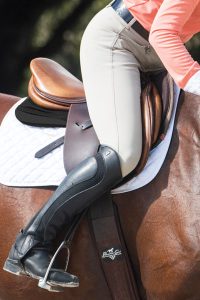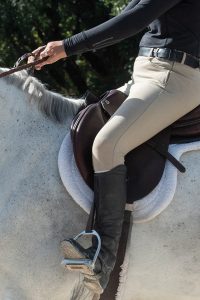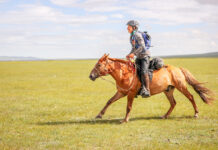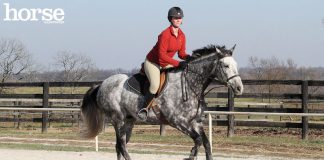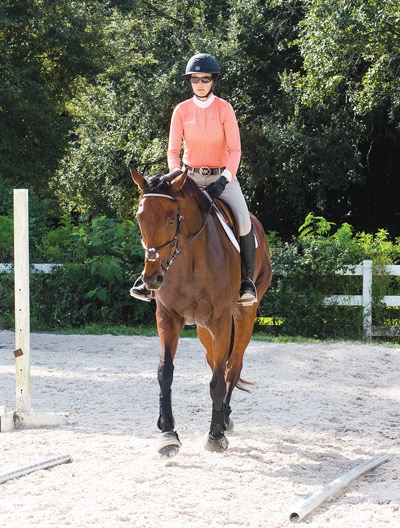
If you’re like me, you are probably wondering how you could get one step closer to having a responsive horse on the aids, just like the top riders. To test your connection and communication with your horse, try the following exercise, which conducts a sort of “stress test” on your transitions. This exercise can be easily executed with any horse, in any riding space, and in any discipline. The question this exercise asks is seemingly simple: Does your horse remain connected and straight through their transitions? Which leads to the question: Are your aids supporting your horse’s connection and straightness?
The chute—placed in the center of the long side of the arena—should be about 4 to 6 feet wide (although you can widen for an especially wobbly green horse or rider), with the option to narrow it as you progress in the exercise.
1. Proceed in your horse’s preferred direction at a working walk. Focus on rhythm and straightness. Be cognizant of your position, which should be straight through your upper body with soft hands and a straight line from elbow to bit. Your leg should be on, but not clenching, your horse’s sides.
2. As you approach the chute, be sure your horse is straight throughout his entire body from nose to tail. If your horse is having trouble with straightness through, for example, his right shoulder, use your right hand with a direct rein aid to your right hip to help correct him.
Left hip drifting out? Bring your left leg back slightly behind the girth to move his hip back over. Also be sure that your walk is truly a forward working walk. It’s easier for a horse to evade the aids in a slower gait.
3. About three to five strides from the center of the chute, stretch up through your core, feeling your belly button suck in and up. You should feel your torso and seat lighten slightly on your horse’s back as your core has now taken more responsibility for the weight of your body.
4. Transition to a halt in the center of the chute by bending your elbows to your sides while keeping your hands at the same height and adding a verbal cue. Now evaluate.
Did your horse maintain straightness, or did he shift his weight in a different direction away from center? Did you stay back in the saddle or lean forward over your hands? Was there resistance to your rein aid? Did your horse disappear from the contact?
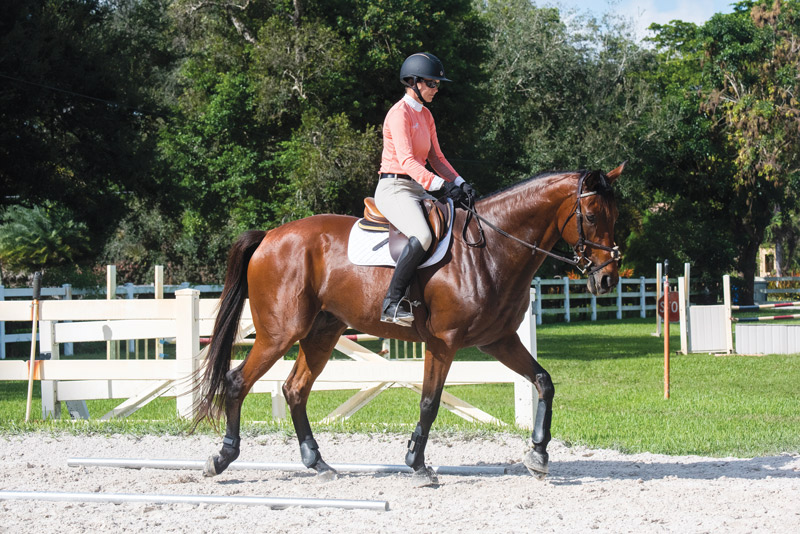
5. Repeat the same direction again. Or if all was well, reverse, repeat and evaluate. Does your horse feel different in this direction? How?
6. Once you feel successful in the walk and halt, continue walking around and come through the chute again in walk, but this time cue your horse so that he picks up trot exactly in the center of the chute in the same place that he was previously asked to halt.
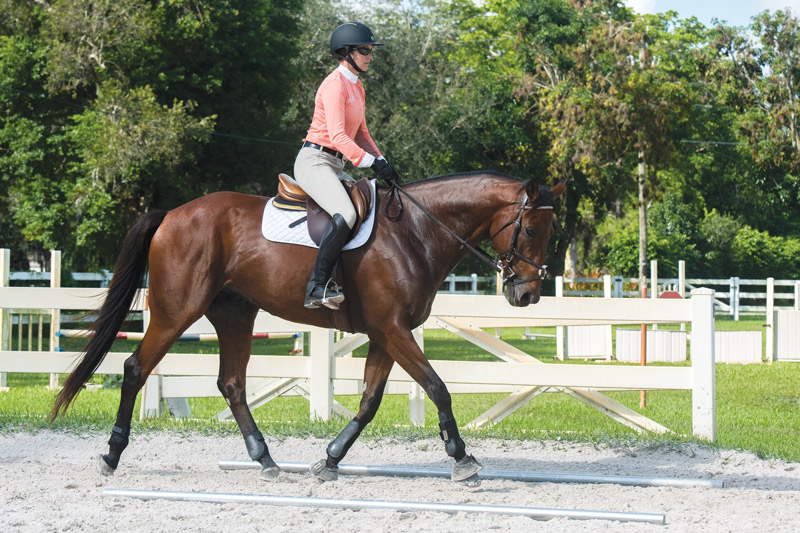
Ensure you are clear with your horse. Use your aids—a stronger leg, cluck, and soft hand—to inform him that the upcoming transition will be upward rather than downward. Lazier horses may have trouble with promptness of the upwards transition but plop into the downwards transitions. Hotter horses may overreact to the aids for an upward transition, but require firmer, stronger aids for a downward transition. Think about the support your horse will need through any transition.
7. Continue making transitions between the poles at an appropriate level for you and your horse. Options include any combination of halt, walk, trot, canter, and even counter-canter. Just be sure not to start rushing at the trot and canter. Feel each transition and focus on how your horse feels underneath you.
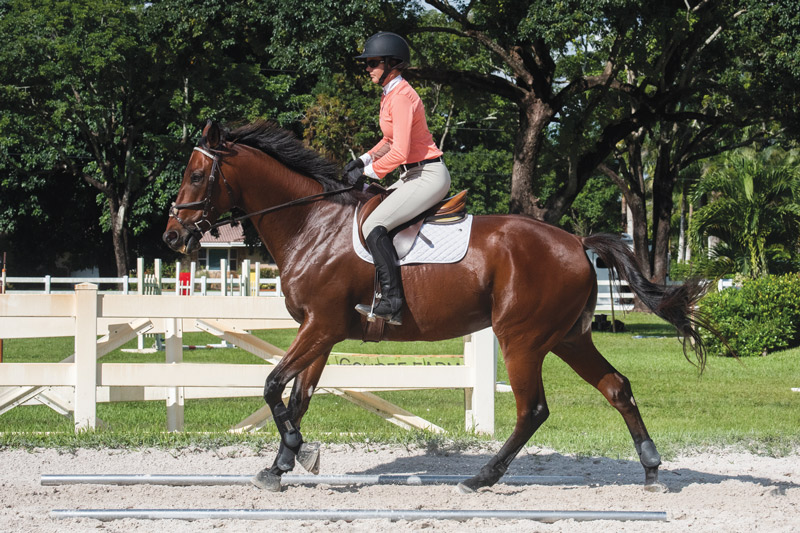
Is he using his body correctly and pushing from behind rather than dragging from his shoulder? Is he straight? What do you feel in your body? Are you square through your shoulders and rib cage with engaged abdominal muscles and even weight in your seat bones?
You can adapt the exercise in various ways:
◆ Ride the exercise without stirrups;
◆ Have a friend call out the transition as you turn the corner and are on the long side approaching the chute so that you have less time to prepare mentally;
◆ Add more subtle transitions, including collecting and extending each gait; and/or
◆ Add the hand gallop.
As you work through this exercise, remember to be patient! If you and your horse are really struggling with a certain transition, leave it for tomorrow. Revisit as needed as a check to see how well you are communicating with your horse. Enjoy!
This article about riding transitions originally appeared in the October 2020 issue of Horse Illustrated magazine. Click here to subscribe!

